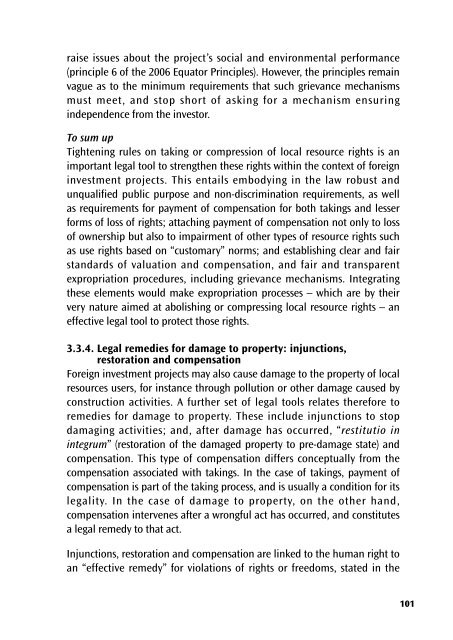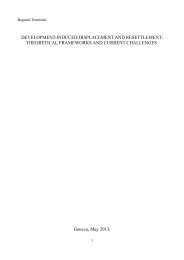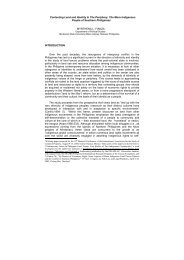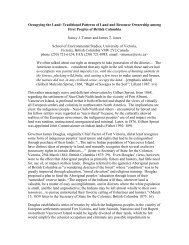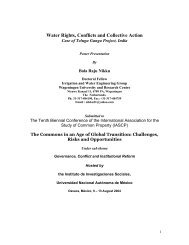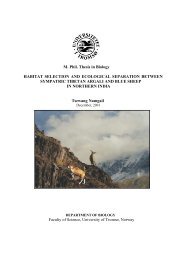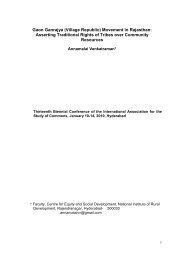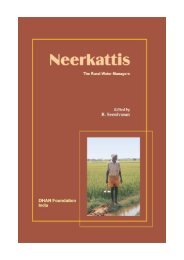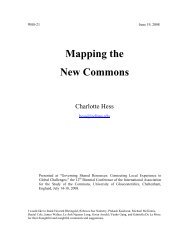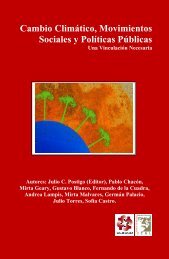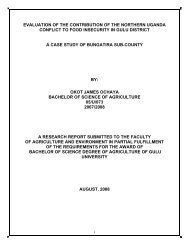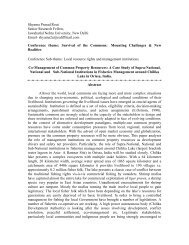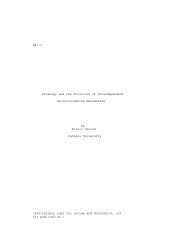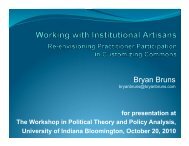Legal empowerment for local resource control
Legal empowerment for local resource control
Legal empowerment for local resource control
Create successful ePaper yourself
Turn your PDF publications into a flip-book with our unique Google optimized e-Paper software.
aise issues about the project’s social and environmental per<strong>for</strong>mance<br />
(principle 6 of the 2006 Equator Principles). However, the principles remain<br />
vague as to the minimum requirements that such grievance mechanisms<br />
must meet, and stop short of asking <strong>for</strong> a mechanism ensuring<br />
independence from the investor.<br />
To sum up<br />
Tightening rules on taking or compression of <strong>local</strong> <strong>resource</strong> rights is an<br />
important legal tool to strengthen these rights within the context of <strong>for</strong>eign<br />
investment projects. This entails embodying in the law robust and<br />
unqualified public purpose and non-discrimination requirements, as well<br />
as requirements <strong>for</strong> payment of compensation <strong>for</strong> both takings and lesser<br />
<strong>for</strong>ms of loss of rights; attaching payment of compensation not only to loss<br />
of ownership but also to impairment of other types of <strong>resource</strong> rights such<br />
as use rights based on “customary” norms; and establishing clear and fair<br />
standards of valuation and compensation, and fair and transparent<br />
expropriation procedures, including grievance mechanisms. Integrating<br />
these elements would make expropriation processes – which are by their<br />
very nature aimed at abolishing or compressing <strong>local</strong> <strong>resource</strong> rights – an<br />
effective legal tool to protect those rights.<br />
3.3.4. <strong>Legal</strong> remedies <strong>for</strong> damage to property: injunctions,<br />
restoration and compensation<br />
Foreign investment projects may also cause damage to the property of <strong>local</strong><br />
<strong>resource</strong>s users, <strong>for</strong> instance through pollution or other damage caused by<br />
construction activities. A further set of legal tools relates there<strong>for</strong>e to<br />
remedies <strong>for</strong> damage to property. These include injunctions to stop<br />
damaging activities; and, after damage has occurred, “restitutio in<br />
integrum” (restoration of the damaged property to pre-damage state) and<br />
compensation. This type of compensation differs conceptually from the<br />
compensation associated with takings. In the case of takings, payment of<br />
compensation is part of the taking process, and is usually a condition <strong>for</strong> its<br />
legality. In the case of damage to property, on the other hand,<br />
compensation intervenes after a wrongful act has occurred, and constitutes<br />
a legal remedy to that act.<br />
Injunctions, restoration and compensation are linked to the human right to<br />
an “effective remedy” <strong>for</strong> violations of rights or freedoms, stated in the<br />
101


